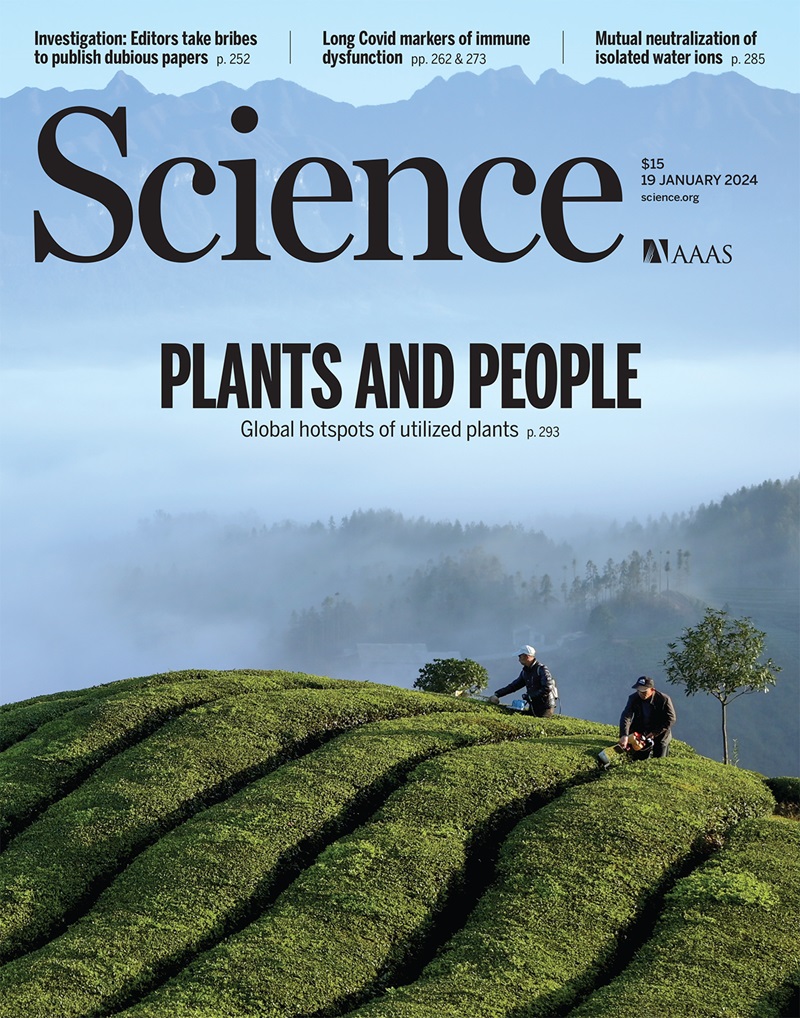自然扭曲以筛应力
IF 45.8
1区 综合性期刊
Q1 MULTIDISCIPLINARY SCIENCES
Science
Pub Date : 2025-02-06
引用次数: 0
摘要
建筑超材料——由定制几何形状产生的具有不同寻常特性的人造结构——可以以理想的方式引导变形和能量流动。一种被称为声子带隙材料的超材料可以通过操纵机械波与材料的周期性结构相互作用的方式来反射、散射或吸收能量。特定频率范围内的波不能穿过这种材料,从而产生声子带隙。这种效应对声学成像、声学隐身、防震和能量收集等技术非常有用。建筑超材料是人工制造的;自然界中是否存在类似的现象?在本期的第659页,Alderete等人(1)报道了螳螂虾的dactyl俱乐部具有音带隙,其中特定频率范围的应力波被过滤。这表明天然材料可以表现出在人工超材料中观察到的声子行为,为设计生物启发和生物混合声子带隙材料提供了可能性。本文章由计算机程序翻译,如有差异,请以英文原文为准。
Naturally twisted to sieve stress
Architected metamaterials—artificial structures with unusual properties that arise from tailored geometry—can guide deformation and energy flow in desirable ways. A subset of metamaterials called phononic bandgap materials can reflect, scatter, or absorb energy by manipulating the way mechanical waves interact with the periodic structures of the material. Waves within a specific frequency range cannot travel through such a material, creating a phononic bandgap. This effect is useful for technologies such as acoustic imaging, acoustic cloaking, shock proofing, and energy harvesting. Architected metamaterials are artificially made; does a similar phenomenon exist in nature? On page 659 of this issue, Alderete et al. (1) report that a mantis shrimp’s dactyl club has phononic bandgaps in which stress waves of specific frequency ranges are filtered. This demonstrates that natural ma terials can exhibit phononic behavior that is observed in artificial metamaterials, opening the possibility for designing bioinspired and biohybrid phononic bandgap materials.
求助全文
通过发布文献求助,成功后即可免费获取论文全文。
去求助
来源期刊

Science
综合性期刊-综合性期刊
CiteScore
61.10
自引率
0.90%
发文量
0
审稿时长
2.1 months
期刊介绍:
Science is a leading outlet for scientific news, commentary, and cutting-edge research. Through its print and online incarnations, Science reaches an estimated worldwide readership of more than one million. Science’s authorship is global too, and its articles consistently rank among the world's most cited research.
Science serves as a forum for discussion of important issues related to the advancement of science by publishing material on which a consensus has been reached as well as including the presentation of minority or conflicting points of view. Accordingly, all articles published in Science—including editorials, news and comment, and book reviews—are signed and reflect the individual views of the authors and not official points of view adopted by AAAS or the institutions with which the authors are affiliated.
Science seeks to publish those papers that are most influential in their fields or across fields and that will significantly advance scientific understanding. Selected papers should present novel and broadly important data, syntheses, or concepts. They should merit recognition by the wider scientific community and general public provided by publication in Science, beyond that provided by specialty journals. Science welcomes submissions from all fields of science and from any source. The editors are committed to the prompt evaluation and publication of submitted papers while upholding high standards that support reproducibility of published research. Science is published weekly; selected papers are published online ahead of print.
 求助内容:
求助内容: 应助结果提醒方式:
应助结果提醒方式:


